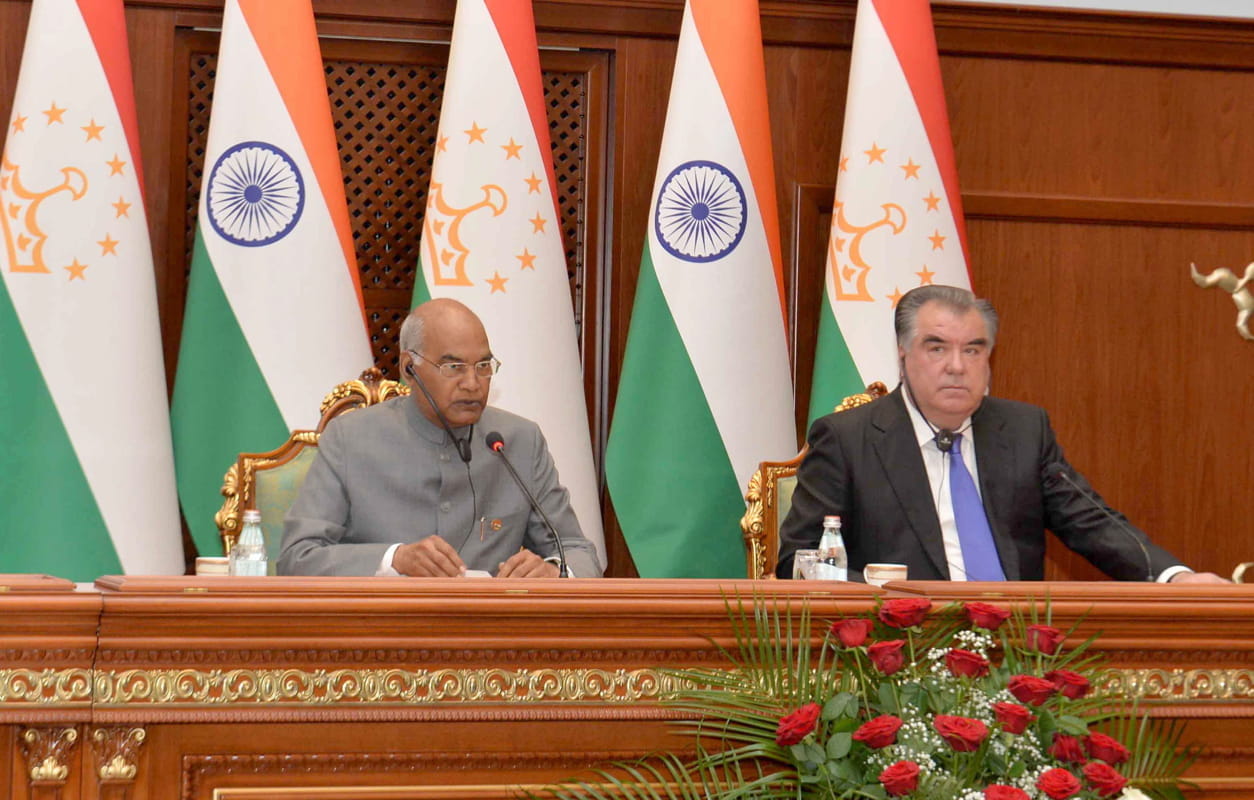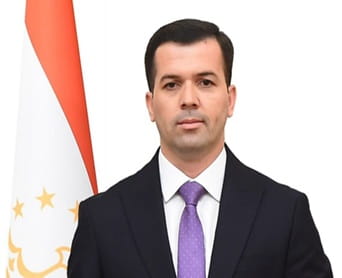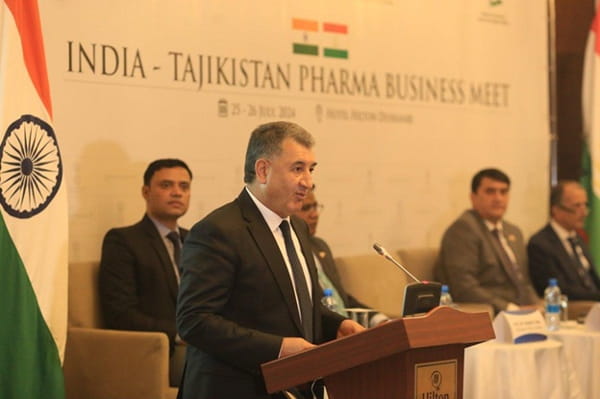
Former Indian President Ram Nath Kovind (L) with Tajik President, Emomali Rahmon in Dushanbe, 2018.

In general, it can be concluded that there are still many untapped opportunities for the expansion of cooperation between Tajikistan and India, including within the framework of multilateral cooperation under the “Central Asia + India” platform. Despite the geographical proximity of the two countries, the volume of bilateral trade and investment is not satisfactory considering the available opportunities. One of the main obstacles to the rapid development of economic relations is the lack of direct connectivity - both land transport and air routes.
Introduction
The Republic of India has a priority position in the foreign policy of the Republic of Tajikistan, and this course is sustainable, long-term and meets the objectives of ensuring the development of both countries. India is one of the important partners of Tajikistan in the region; the two countries are connected by deep cultural and historical ties.
Relations between our countries, the 32nd anniversary of which was celebrated on 28 August 2024, are on the rise characterised by further deepening of mutual understanding and expansion of mutually beneficial cooperation in various fields including defence and security, economy and trade, health, education, culture, among others.
Over more than three decades of mutually beneficial cooperation, both sides have made every effort to strengthen the legal and contractual basis of our ties. Till date, the legal basis of our cooperation has more than seventy documents, which is a significant achievement. Nevertheless, both sides are working intensively to expand the legal framework of bilateral relations. About twenty bilateral documents in such spheres as industry, energy and tourism are currently at the stage of harmonisation.
Tajikistan attaches great importance to the further development of cooperation between our countries within the multilateral framework covering the United Nations, Conference on Interaction and Confidence-Building Measures in Asia (CICA), Shanghai Cooperation Organization (SCO), as well as within the Central Asia-India mechanism.
Although Tajikistan and India have a lot of potential for development and strengthening of trade and economic cooperation, unfortunately, not all of that potential has been exploited. For example, according to the official statistics of Tajikistan, in 2023, the trade volume of goods and products between Tajikistan and India was only about $76 million. The share of India in Tajikistan’s total foreign trade is only 0.9 percent.
In this context, taking into account the existing capacities and opportunities, it will be beneficial to address outstanding issues of expanding mutually beneficial cooperation by authorities of both countries. One of the measures in this direction is to attract the attention of Indian investors to the priority areas of bilateral cooperation, in particular, healthcare, chemical and pharmaceutical industry, energy, education and science, new technology, mining, light and textile industry, agriculture, as well as tourism and banking.
Tajikistan-India Energy Cooperation
Strengthening cooperation in the field of energy with India is one of the priority areas. According to the available information, energy security is one of the main priorities of India's domestic and foreign policy, and is related to the country's economic development and social policy.
In this regard, Tajikistan's abundant natural resources in the hydropower sector provide an opportunity for Indian public and private companies to participate in the implementation of the country's prospective energy projects, including the generation of renewable energy.
Cooperation with such Indian companies as Bharat Heavy Electronics Limited (BHEL), KEC International, Kalpataru Projects International Limited, among others is a worthy example of our cooperation. However, there are more opportunities for Indian companies to participate in Tajikistan's energy sector, including the construction of the Rogun hydropower plant, which will increase electricity generation and significantly reduce harmful emissions in the region.
The construction of the Rogun plant will open new opportunities to interconnect the energy systems of both countries in the future and create an energy market in Central and South Asia.
Furthermore, attracting investment from Indian companies for construction of hydropower plants "Sanobod" in Rushon district of Badakhshan region (200 MW) and "Charsem" in Shughnon district of the same region (14 MW), as well as the construction of other medium capacity hydropower facilities accord with Tajik priorities.
The establishment of a Joint Working Group on Energy would greatly facilitate cooperation in achieving these goals and provide opportunities to develop additional proposals for cooperation in solar energy. We believe that the integrated utilisation of both hydropower and solar energy will contribute to the diversification of energy sources and ensure the complementarity of these two green energy sources. Tajik experts are negotiating an Indian credit facility for this project.
Healthcare and Pharmaceutical Cooperation

India Tajikistan Pharma Business Meet in Dushanbe, 2024. Pharmexcil X
As is well known, India is a world leader in the development of healthcare and pharmaceutical industry. At the same time, Tajikistan has abundant natural sources of medicinal herbs and springs and other healing waters. These complementarities can serve to launch the production and establishment of joint pharmaceutical and chemical enterprises, development of medical tourism and other areas of health between the two countries.
In addition, every year thousands of patients from Tajikistan turn to Indian health institutions for treatment. Therefore, the implementation of joint projects for the construction of modern medical and diagnostic institutions in Tajikistan will be appropriate.
Education, Science and New Technologies
Cooperation in the field of education has been stable and growing. Every year India conducts training courses within the framework of the Economic and Technical Cooperation Program (ITEC) and the Indian Council for Cultural Relations (ICCR). Recently, the ITEC quota for Tajikistan has been increased from 100 in 2009 to 250, which we highly appreciate.
India ranks third in terms of the number of universities in the world after America and China, and the development of higher education is one of the country's priorities. India is one of the leading countries in the field of Information and Technology. Indian Universities operate on the model of Western countries and provide the experience of the world's leading universities.
Higher education institutions in India focus more on training professionals in the fields of physical and technical sciences, including digital technology, engineering and natural sciences. Therefore, it is beneficial to promote the opening of branches of Indian universities including IITs, IIITs and private players like Amity University in Tajikistan to train high-level specialists in the field of information technology (IT).
India: The IT Superpower
It is true that India is the world's leading IT exporter. The implementation of Prime Minister Narendra Modi's "Digital India" and "Direct Benefit Transfer" initiatives have contributed to the rapid development of mobile phone production, digital payment applications and e-commerce in the country. Access to smartphones and the internet enables Indian citizens to use digital services, and this trend is on the rise. Even small businesses have adapted to the digital business landscape.
Given the undeniable experience of the hi-tech centres of Bengaluru and South India in general, it would be desirable to establish more active cooperation in the field of education and innovative technologies. Considering the rich experience of India in the field of IT, the relevant authorities of Tajikistan should cooperate with the Society of Software Technology Parks of India, the Association of Electronics and Software of Gujarat State "Gesia IT Association", "iCreate" and the National Association of Software and Services Companies of India (NASSCOM) to establish technology parks for software products and information technologies, Science and Technology Parks and Innovation Centres in the Republic of Tajikistan.
This will contribute to the development of the domestic IT market, creating highly qualified specialists in the field of information and communication technologies, and attracting Indian IT companies to the Republic of Tajikistan.
Textile, Leather and Footwear Production Cooperation
There are many opportunities for cooperation between the two countries in the fields of textile, leather and footwear production. Indian companies should be invited to the Tajik market for joint production of textiles, leather and shoes.
A bilateral business forum and conference with the participation of the leading companies of the Indian textile industry, such as "Arvind Industries", "Nandan Denim", "Grasim Industries", "Sintex Industries Limited", "Rimtex" and "Lakshmi" should be organised.
Tourism Cooperation
Tajikistan and India have abundant tourism potential. The expansion of cooperation with Indian partners in the field of tourism, especially the implementation of specific projects on the construction of hotels, tourist and entertainment is significant.
Conclusion
There are still many untapped opportunities for the expansion of cooperation between Tajikistan and India, including within the framework of multilateral cooperation under the “Central Asia + India” platform. Despite the geographical proximity of the two countries, the volume of bilateral trade and investment is not satisfactory considering the available opportunities. One of the main obstacles to the rapid development of economic relations is the lack of direct connectivity, both land transport and air routes.
(Exclusive to NatStrat)